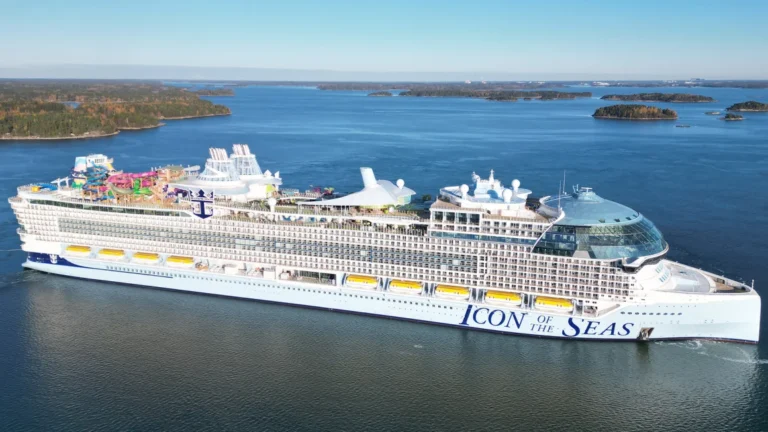Icon of the Seas
The largest cruise ship in the world, named Icon of the Seas, began its first journey from Miami, Florida on 27th January, 2024. However, there are worries about the ship’s methane emissions.
It is going on a seven-day trip through tropical islands for its first commercial voyage. On Saturday, people watched as Royal Caribbean International’s huge ship, called the Icon of the Seas, left the Port of Miami with a lot of excitement. With eight “neighborhoods,” seven pools, six waterslides, and 20 decks in total, the ship started its first cruise to take advantage of the increasing demand for travel.
Icon of the Seas Size
Surprisingly, the ship is about five times larger than the Titanic and can accommodate up to 7,600 passengers at maximum capacity. The construction of the ship cost $2 billion. It stretches almost 1,200 feet (365 meters) from front to back and weighs 250,800 metric tons. Earlier this month, during a briefing, Jason Liberty, the CEO of Royal Caribbean Group, called the Icon of the Seas the “biggest, baddest ship on the planet.”
The introduction of this immense floating resort has reignited worries about the environmental impact of cruise tourism. The ship is designed to operate using liquefied natural gas, which burns cleaner than other traditional marine fuels but contains high methane levels. Methane is around 80 times more powerful than carbon dioxide in terms of warming the atmosphere, and scientists caution that methane emissions must be significantly reduced to mitigate the worst effects of the climate crisis. Last week, the ICCT published a report cautioning that methane emissions from LNG-powered ships exceeded the levels assumed by existing regulations. The report highlighted the rapid expansion of LNG usage as a marine fuel.
According to Royal Caribbean International, every unit of energy consumed by the Icon of the Seas undergoes thorough examination to enhance energy efficiency and reduce emissions.




